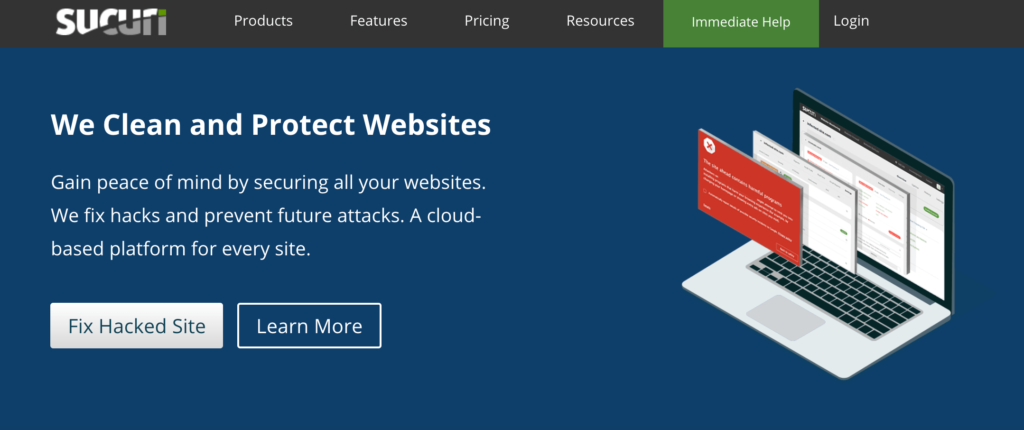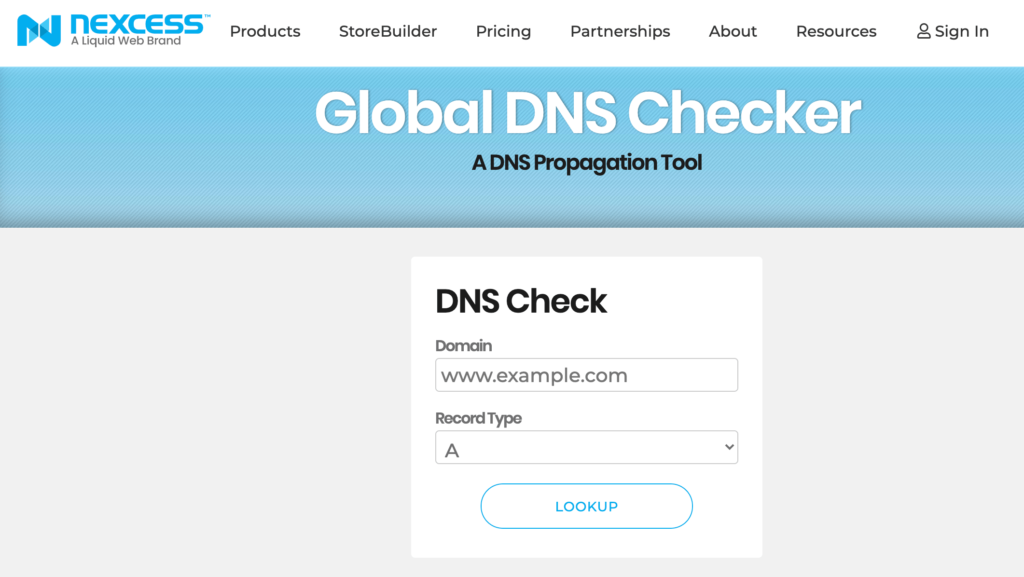DNS is one of the most critical internet services in existence. But for most beginners, the concept seems complex—especially for those without a technical background.
Due to the importance of DNS, it’s often a target of hackers and other cybercriminals.
That’s why it’s essential for webmasters to track DNS performance and deploy a DNS monitoring strategy. There are many great tools out there that can let you know if there’s a change or unusual activity associated with your DNS to help eliminate your vulnerabilities.
This guide will help you put your mind at ease and give you a better understanding of DNS.
What is DNS?
DNS is an acronym for “Domain Name System.” In short, the system converts names into IP addresses.
Every website has an IP address—a string of numbers. So when you try to access a website (like www.quicksprout.com), your device follows a process that ultimately finds the appropriate IP address, so you’re not forced to memorize it on your own.
DNS can best be described as the phonebook of the internet. But instead of a person’s name and phone number in the directory, DNS lists domains and IP addresses.
5 Tools to Improve Your DNS
These are some of my favorite DNS tools on the market today. I’ll provide a brief overview and description of each one below so you can determine if it’s right for your needs.
#1 — Sucuri
Similar to the previous tool, Sucuri is another all-in-one solution for site security, protection, and monitoring. That platform is designed to give website owners peace of mind so they won’t have to worry about website security threats.
24-hour DNS monitoring is included with every Sucuri plan. You’ll receive an instant notification if there are any changes made to your DNS records. Sucuri will let you know if your DNS becomes unavailable or if hackers changed your DNS with malicious intent.
Using Sucuri is easy. Once you’re signed up, just enter your URL, and the DNS remote scanner will automatically be enabled. You can control the frequency of DNS scans directly from your Sucuri dashboard based on your needs.
Beyond the DNS monitoring and protection tools, Sucuri has countless other resources website owners need to help protect and secure their sites. They offer security scans, malware detection, blacklist monitoring, file change detection, SSL monitoring, DDoS attack mitigation, brute force protection, and more.
You’ll even benefit from website performance tools like a global CDN and smart caching options. Websites in 130+ countries rely on Sucuri.
Plans start at $199.99 per year for a single website. All subscriptions are backed by a 30-day money-back guarantee.
#2 — Nexcess Global DNS Checker
The Nexcess Global DNS Checker is a bit more use-case specific compared to some of the other tools we’ve reviewed so far. As opposed to an all-in-one solution for DNS monitoring and site security, this solution provides a free DNS lookup service for new websites or sites that recently switched hosting providers.
It’s designed to track DNS propagation, which is when it takes for DNS changes to update across the web. This can range anywhere from a few hours to 72+ hours. This free tool helps you track how far your domain has propagated and lets you know if there are any problems during the process.
Using the tool is about as straightforward as it gets. Just enter your domain and select a record type to see how different servers across the globe are reporting for your domain.
DNS propagation usually isn’t an instant process. But if it’s taking longer than it should, the Nexcess Global DNS Checker can help you identify potential problems. Then you can reach out to your web hosting provider for an update and ensure the issues are fixed ASAP.
In addition to this free tool, Nexcess has other services and products for managed web hosting, domain registration, SSL certificates, and more. So, feel free to browse around on the site to see if they can accommodate some of your other needs that go beyond basic DNS checking.
#3 — Site24x7
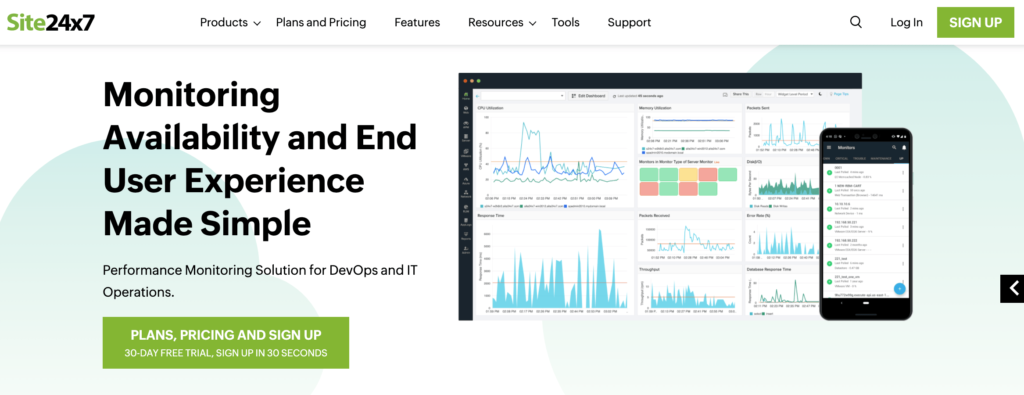
Site24x7 offers an extensive toolkit of both free and paid website monitoring services. DNS monitoring is just one of the many benefits that you’ll get from a Site24x7 subscription. They have solutions for website performance monitoring, page speed monitoring, mail server monitoring, application performance monitoring, SSL certificate monitoring, and so much more.
The platform even has a free DNS analysis tool that you can use without signing in or creating an account. If you decide to make a Site 24×7 account, you’ll benefit from free continuous monitoring for up to five websites.
With that said, a paid Site24x7 package is definitely the best way to get the most out of their DNS services. These plans start as low as $9 per month for monitoring up to ten websites.
In addition to DNS server monitoring, all plans come with more than two dozen tools for monitoring and compliance. You can use Site24x7 to address DNS configuration errors, obtain your distributed DNS servers’ response time from 90+ global monitoring stations, manage your SLAs from DNS hosting providers, and so much more. You’ll benefit from comprehensive reports and summaries of your DNS, which is a great way to stay on top of DNS errors.
If you’re looking for an all-in-one monitoring solution that goes beyond DNS, Site24x7 should be at the top of your list. Sign up and try it for free with a 30-day trial.
#4 — DNS Spy
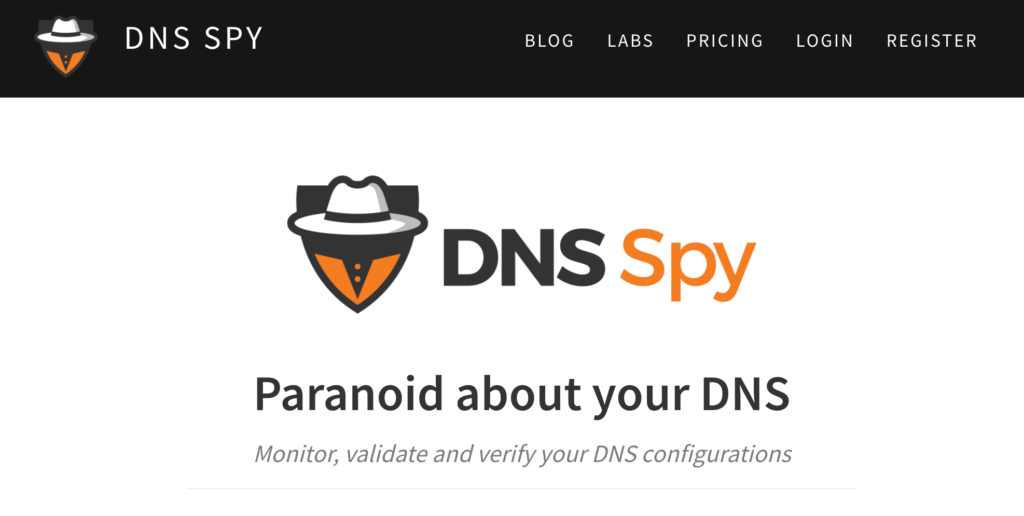
As the name implies, DNS Spy is a tool designed explicitly for DNS. It’s a simple way to monitor and back up your DNS. You’ll also get alerted when changes are made to your DNS records. Using the platform is simple.
Once you’ve created an account, you just need to add domains that you want to monitor. DNS Spy takes care of everything else for you. The platform will automatically detect all relevant DNS records and monitor your domains for changes. Even if there’s a subtle change in your DNS, like a two-minute hijack of your records, DNS Spy will know.
The DNS backup tool is one of my favorite features of DNS Spy. If your existing DNS provider becomes unavailable or you experience a DDoS attack, you can rest easy knowing that DNS Spy offers backups for your DNS. So you’ll be able to quickly restore your DNS records to any other provider.
Use the tool to track your competitors, see a full history of your DNS records, and monitor your DNS migrations when you’re switching providers. DNS Spy also detects any improper nameserver configurations. Whenever a record changes, DNS Spy validates them and sends you an alert if something is wrong.
Create an account today to start your free trial of DNS Spy.
#5 — Uptrends
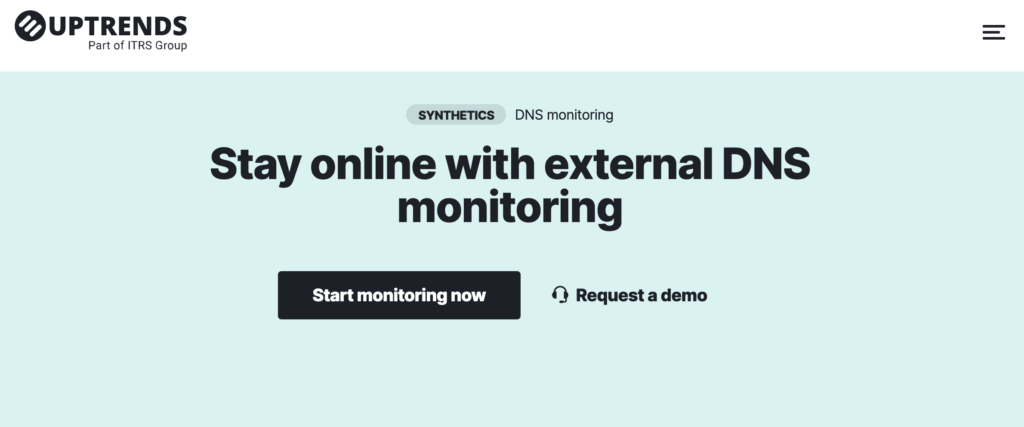
Uptrends is another popular solution for those of you seeking an all-in-one solution for website monitoring and site performance monitoring. It’s a great way to optimize the speed, performance, and uptime of websites, APIs, and servers.
Uptrends will notify you right away if something goes wrong. The platform runs over 43.6 million tests for customers daily. It’s trusted by big names like Microsoft, Vimeo, Zendesk, Bitly, and SpaceX.
As for DNS servers, Uptrends provides extensive DNS health checks and offers reliable DNS reporting. You can use it to monitor your DNS and diagnose any potential problems. You’ll get notifications and receive detailed reports on the performance of your DNS servers worldwide.
It’s easy to share these reports with your entire team as well. Uptrends understands how vital your DNS is to the success of your site. That’s why they monitor your DNS every minute 24/7 to ensure your DNS is safeguarded.
You can also take advantage of a free Uptrends DNS report. Plans start at $12.38 per month, and you can try Uptrends for free with a 30-day trial.
The Basics of DNS
Let’s take a closer look at the core components of DNS. This will give you a better understanding of how it works.
Domain Name and IP Address
Your domain is the name of your website. For us, it’s www.quicksprout.com. Domains are the address that people use to find your website online. Every domain has an IP address. Every device and network that’s connected to the internet also has an IP address.
Domain Name Systems (DNS) translate domains into IP addresses so devices connected to the internet can be pointed in the right direction. A DNS record is a domain and its matching IP address.
Hosting
Hosting is the place where all of your website files or data are stored. Websites are stored on servers, which are offered by web hosting providers. The hosting process makes your site accessible to everyone on the internet.
If you’re creating a new website from scratch, you need to sign up for a web hosting service to get started. Check out our list of the best web hosting providers for some guidance in this category.
Your hosting provider ultimately gives you the IP address that’s entered into DNS. That’s why your IP address will change any time the domain gets moved to a new server.
Nameservers
Nameservers keep all of the DNS records associated with your domain. It will provide any information on your DNS to anyone who requests it.
For the most part, domain registrars or hosting providers manage your nameserver. Every nameserver has its own address and can store records for multiple websites. For example, if you were hosting your website with DreamHost, the nameservers will be set up like this:
- ns1.dreamhost.com 162.159.26.14
- ns2.dreamhost.com 162.159.26.81
- ns3.dreamhost.com 162.159.27.84
All domains need to have at least two nameservers. The first one acts as the primary server. If there’s no response to the primary server, then the second one will be used.
DNS Records
There are several different types of DNS records. Here are a handful of the most common record types relevant for beginners:
- A — host address
- MX — email (mail exchange)
- TXT — text content
- CNAME — canonical name
- SOA — start of authority
- SRV — location of server
- AAAA — IPv6 host address
Understanding the different types of DNS records is crucial for monitoring. If a change occurs in one of these records, it could indicate a threat or hack.
3 Tricks For DNS
If you’re new to the concept of DNS, be sure to follow these quick tips and best practices. This will be the best way for you to make a big impact on your DNS experience with minimal effort.
Trick #1: Leverage DNS Monitoring
Sign up for a DNS monitoring service. The tools listed earlier in this guide are the best place to start your search. With DNS monitoring, you won’t have to worry about your DNS on a day-to-day basis. If there’s a change or something is wrong, you’ll be alerted, and you can diagnose the problem from there. Without DNS monitoring, you’d be forced to look for changes manually, which is unrealistic for most of us.
Trick #2: Use Tools to Track DNS Propagation
This is the process of updating your DNS whenever a change has been made. Using a tool to track your DNS propagation will show you how far along you are in the process. It can also help you identify any red flags or problems. Depending on the change, worldwide DNS propagation can take up to 72 hours.
DNS propagation is crucial for anyone creating a new website from scratch. It’s also important for any website that’s switching servers or changing hosting providers.
Trick #3: Manage CNAME Records
CNAME records are essential to understand for anyone who has more than one domain. This type of DNS record points from one domain to another domain instead of an IP address.
For example, let’s say your website is sample.com. You’ve also registered domains like samples.com and asample.com, and you want all of the traffic pointed to your main site. In this scenario, you can set up a CNAME record to ensure that anyone who visits samples.com or asample.com gets sent to your main site, sample.com.
via https://AiUpNow.com April 4, 2021 at 12:00PM by Lars Lofgren, Khareem Sudlow,
